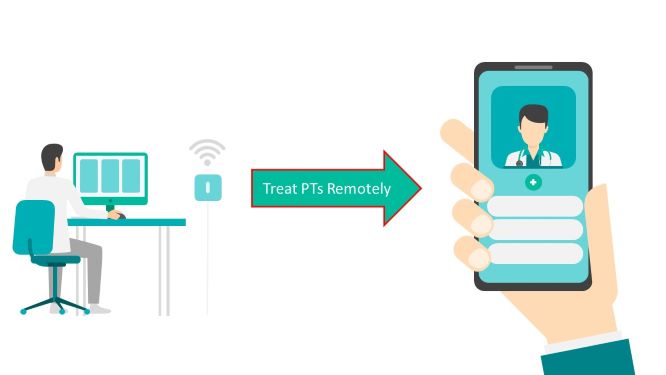
During the PHE, we have seen a spike in Telehealth services in most clinical settings from coast to coast. Yet many practices experience hiccups delivering high-quality services to their patients that could be easily avoided – along with the associated stress and frustration (which is felt by both sides). Here are a few tips for either establishing an effective Telehealth workflow in your practice or assessing and improving your current efforts:
Train on the applications and the workflows BEFORE scheduling patients.
Make sure those involved with each step of the workflow understand how their tasks impact the Telehealth experience for both the patient and the provider (and any supporting clinical staff). If the clinical workflow is outside the EMR or involves multiple applications, be sure everyone knows how to initiate the video call, maintain the connection (and troubleshoot if there’s an issue), and properly document collected information in a timely manner.
Ensure the patient can connect BEFORE the day of the visit.
After you know what you are going to do in the clinic, you need to ensure the patients know what to do, when to do it, and that they are able to successfully connect to the practice. Reach out to them in advance and test the connection. This will help the patient gain confidence in using a screen to communicate with their health care team before their first visit. If they self-monitor vitals (i.e. BP or glucose levels), the nurse or medical assistant can ensure the information is posted in advance.
This is an excellent time to enroll them in care management or remote physiologic monitoring, if the provider orders it, gain their verbal consent, schedule their Medicare Annual Wellness Visit, or other actions that can save time on the day of their provider visit.
Murphey’s Law applies to Telehealth, too; have a back-up plan READY for the visits.
Create (and use) a checklist to ensure all things necessary for a successful ‘visit’ are in place before handing the patient off to the provider – and then be prepared to switch to the back-up plan if the connection is lost, such as a phone which is readily available to quickly re-establish audio until the video can connection can be repaired. The provider-patient communication can continue. If you are able to have a secondary video capability, that would be even better.
While interruptions are not likely if you are using a reliable service, having a back-up plan providers and staff are comfortable with performing creates security that comes across as confidence to the patient.
Squarely on the Providers’ shoulders: Have a plan BEFORE you sit in front of the camera.
Make sure your surroundings (and you!) are neat and professional, especially if working from home. Make sure the camera view does not include any sensitive images or other PHI. And, just as importantly, make sure you know how you plan to engage your patient. Think about your questions in advance and be sure to engage in a way that puts the patient at ease – they do this one time for every 200 times you do.
If it ain’t broke, don’t try to fix it. If Team-Based is your approach, keep doing it.
Providers that normally relied on staff to support documentation and order entry can still approach patient care via Telehealth similarly. With Telehealth tools that support a collaborative workflow, the staff can fully “screen” the patient before the provider does his or her part of the visit and then staff can resume control of the communication to complete the visit and care coordination, follow-up scheduling, etc. This allows the provider to focus more on the patient and puts the clinical staff back in charge of the tasks normally performed by clinical staff.
Finally, be patient. Most things worth doing are not easy.
Change like this is not always easy, and the path is not always clear. Some trial and error figuring out what will and will not work in your practice is expected. Working as a team to integrate Telehealth will allow you to provide the same exceptional care to your patients you did last year and the year before that.
Also, be prepare to smile through continual attempts at novelty – no matter how many times you hear jokes about your “web-side manner”, the screen adding 10 pounds, the “new normal” while facing a “twindemic” and trying to avoid “maskholes”, “covidiots”, or developing “maskne” (breakout from wearing masks). In that last example, just remember the maskholes don’t develop maskne, but they do have a deeper affliction as they seem focused on fattening the curve…
Summary
We called them “Telehealth No-Brainers” because each aspect is normally inherent to in-person patient care. However, applying something that comes naturally in the normal workflow to a ‘different normal’ is not always easy. Hopefully, the descriptive application helps you translate the exceptional care you always give your patients to the new and emerging digital interfaces. If you would like to discuss improving your Telehealth program or other remote patient and care management services, please select the Get Help next to your desired subject on our Services page. You will be prompted to register and submit some information (which we do NOT share externally) and then we can get started.
